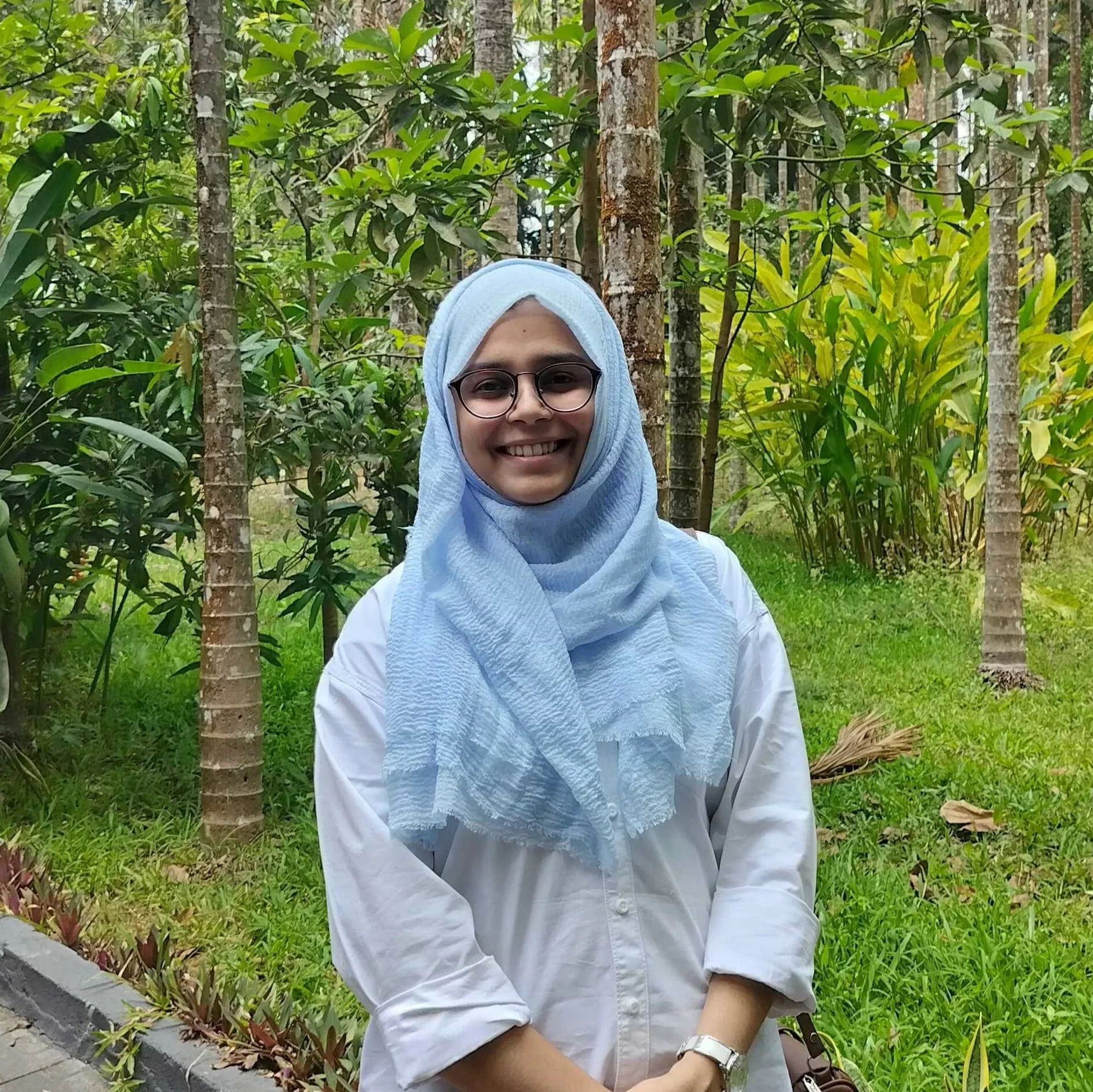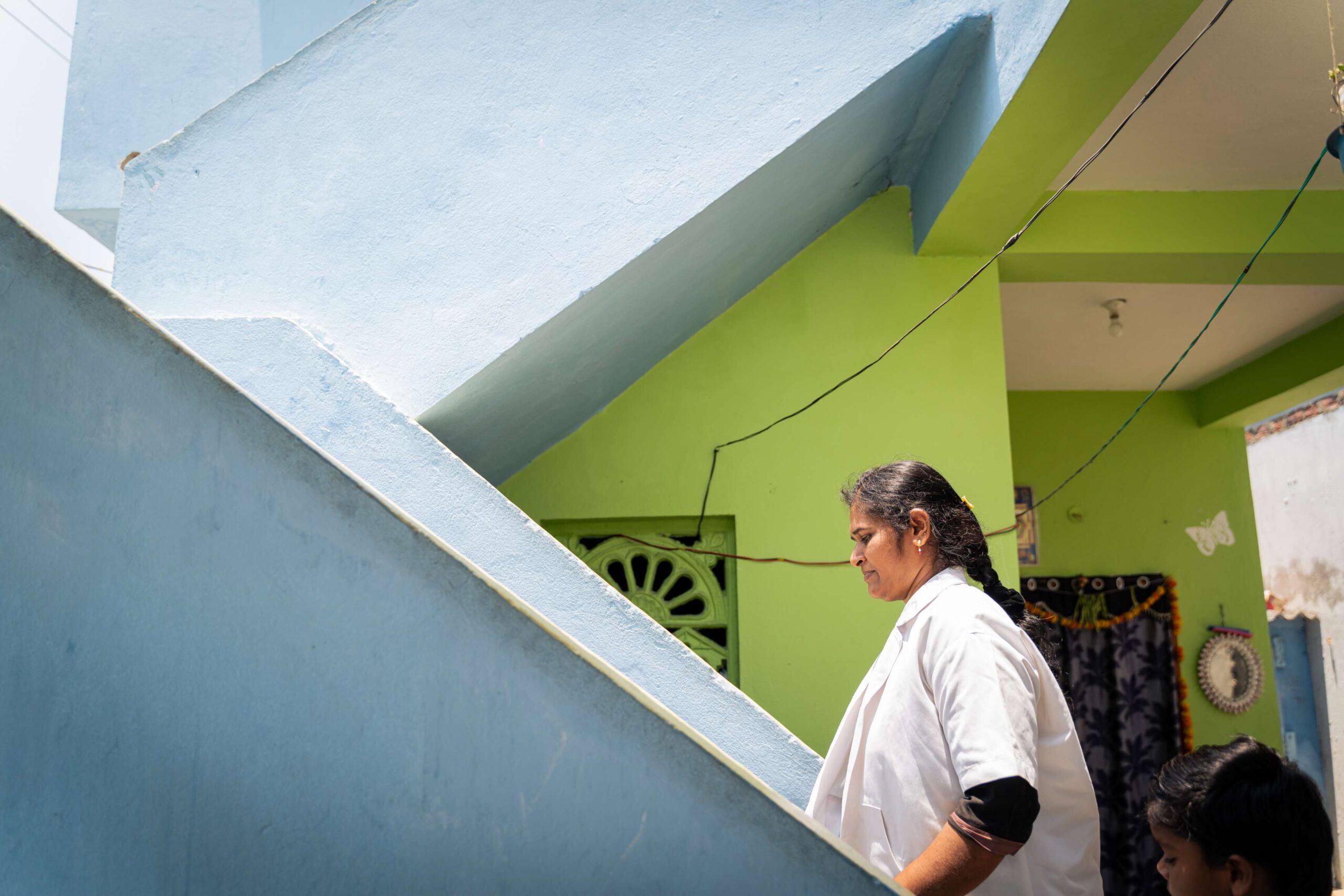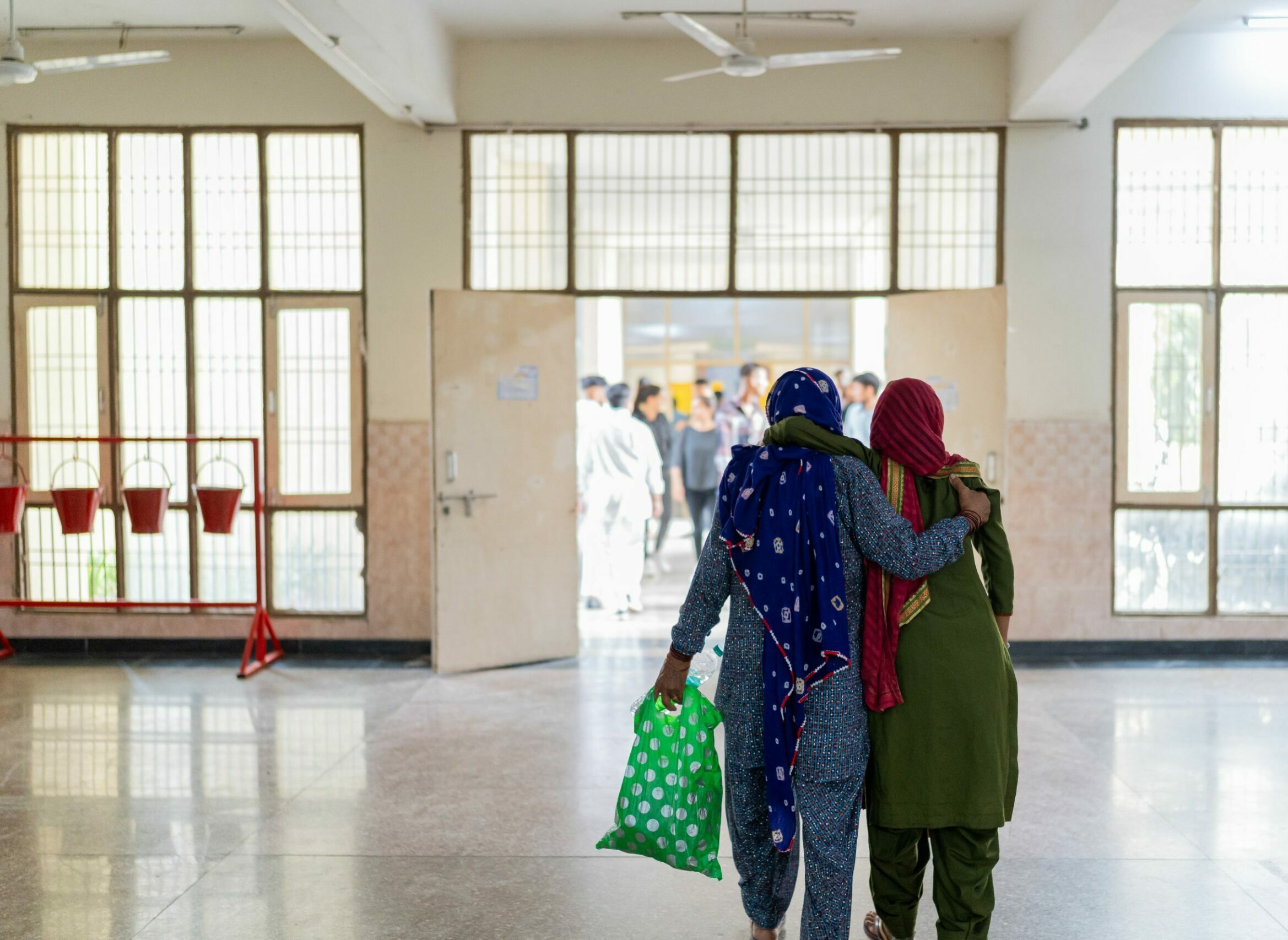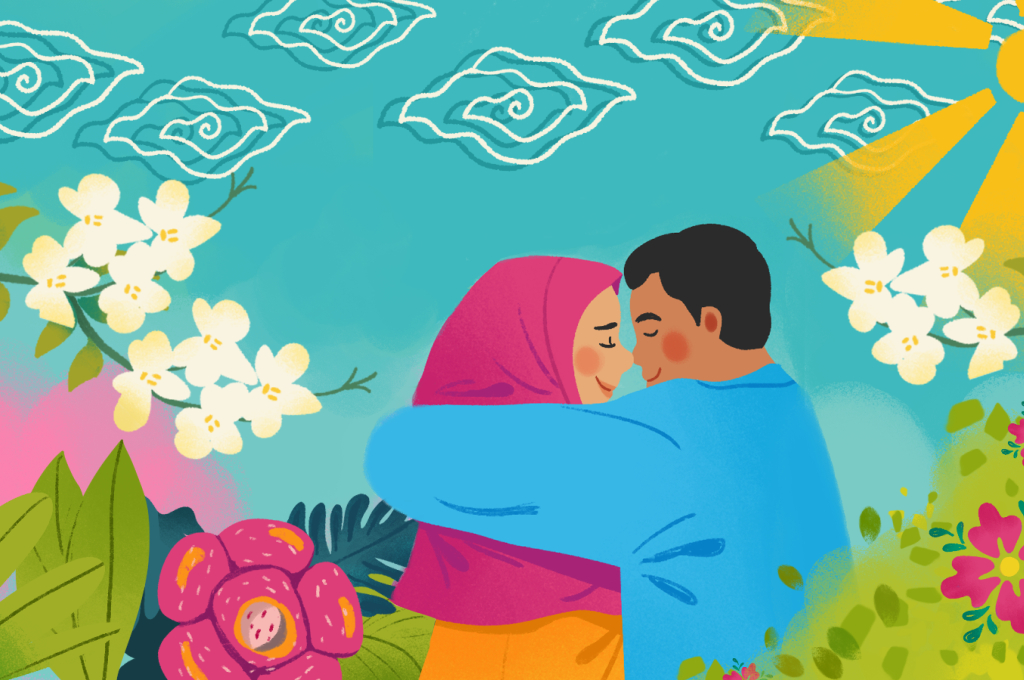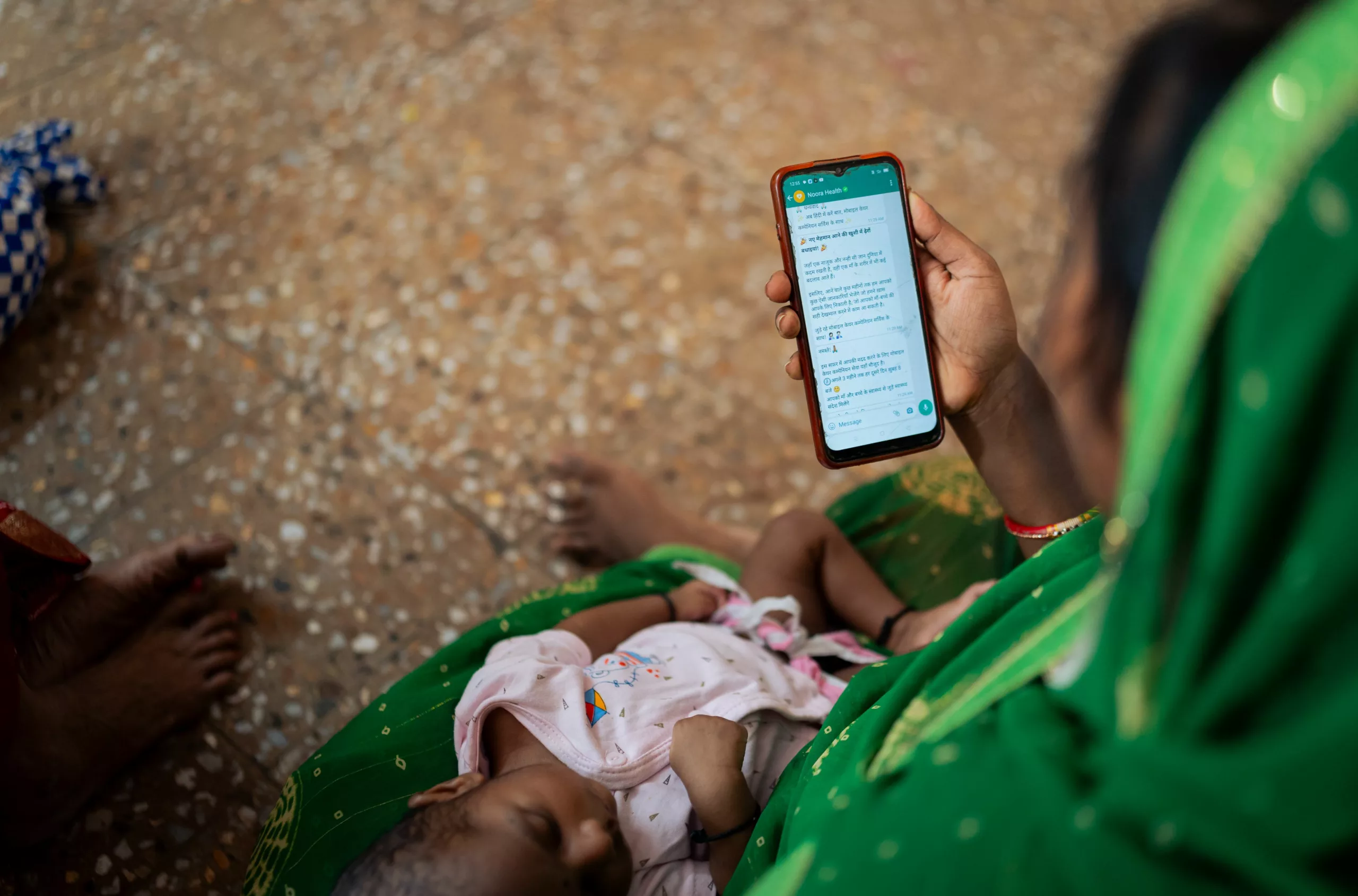
Extending care beyond the hospital
Four lessons from designing mobile-based health services.
Mobile phones have increasingly become a critical tool for delivering vital health information to patients and promoting healthy behaviors. Though not without their challenges, research shows that mobile-based health initiatives are a cost-effective and scalable method to bridge gaps and enhance access to healthcare.
In September 2019, we began exploring the potential of mobile-based communication to strengthen Noora Health’s Care Companion Program (CCP) and provide support to patients and caregivers in India. We did this via the Remote Engagement Service (RES), where patients and caregivers can subscribe to receive personalized support for their treatment stage, reinforcing messages, and training on healthy caregiving practices through a combination of pre-recorded audio messages (IVRS), text messages (WhatsApp), and tele training.
Since then, we’ve constantly been in the process of adapting and tailoring the service to meet the needs of different users, such as high-risk patients — individuals more likely to experience complications or adverse outcomes due to factors such as chronic conditions, age, comorbidities, a weakened immune system, or specific circumstances like pregnancy. In early 2023, we integrated the RES into our non-communicable diseases, general medical, and surgical care program across district and sub-district hospitals in the Indian state of Punjab. The goal was to reinforce information on preventative behaviors such as diabetes screening, hypertension monitoring, and the importance of a good diet, for patients and their families, once they went home.
Assess, revise, refine
As patients’ and caregivers’ needs evolve, it is important for programs and services to evolve alongside to ensure that they continue to successfully meet those needs. And so, in October 2023, we undertook a comprehensive feedback study to evaluate the effectiveness of all the communication we were sending out through the RES. The focus was on assessing the quality of content, the onboarding experience, and information reception and retention among WhatsApp and IVRS subscribers. To do this, we conducted key informant interviews with patients and caregivers, involving a total of 31 home visits and interviews spanning 25 localities and villages around the cities of Chandigarh and Amritsar.
Overall, the feedback gathered from these home-based interviews was positive, with participants sharing that the medium and the messages were useful in promoting health awareness and facilitating behavior change. It also provided us with valuable insights into what we need to keep in mind when designing mobile-based health services for patients and caregivers; insights that are relevant not only for the public health sector but for anyone interested in leveraging technology for good.
Here are four key recommendations that emerged from our feedback study:
1. Diversify channels for outreach
Respondents indicated that they learned about Noora Health’s mobile-based service through multiple sources rather than any single channel. This included posters and danglers in healthcare facilities, outreach by community health workers, and through interactions with nurses at hospitals.
“Our mother was admitted to a government hospital due to high blood pressure. From a poster there we came to know about the service and subscribed to it to help manage her blood pressure.” — A caregiver using the WhatsApp service
Identifying and leveraging different outreach strategies and touchpoints is something we were extremely intentional about when designing the program, and it was affirming to receive this feedback from patients and caregivers.
As we think about further boosting awareness and uptake of the service, building on this diversity of outreach channels is crucial. Doing this will create more opportunities for a wider range of people to engage organically with the platform, whether or not they’ve been part of a CCP session. Based on feedback from the respondents, the team discussed a few possible ways to achieve this:
- Building alliances with a broader spectrum of healthcare providers and trusted community leaders to promote the service
- Strategically using social media platforms and local radio broadcasts to reach wider, more geographically diverse communities
- Participating in community events like medical camps and village- or block-level meetings, alongside collaborating with community groups and government agencies to build a collective approach for the long-term sustainability of these initiatives
2. Customize content to make it memorable
During the feedback study, storytelling emerged as a powerful tool to make complex health information relatable to patients and caregivers. Many of the WhatsApp messages we send are presented in the form of a story, and participants appreciated how these stories were accessible and engaging, helping them retain information and making it easier for them to recall and apply it in their daily lives.
“Stories from these WhatsApp messages are better at making complex medical information easy and relatable for everyone. I believe most patients would prefer the storytelling approach.” — A patient using the WhatsApp service
Beyond storytelling, respondents shared several other factors that helped them retain key health messages:
- Personalized content that addressed their specific health concerns, rather than broad general advice.
- Simple language and repetition of key messages using techniques like rhymes, aid comprehension and reinforce important information.
- Short and concise communication, which held their attention and interest, when compared to a longer message
- Multimedia messages that incorporated videos and images and went beyond the traditional text-based format.
While we’re already using most of these strategies to varying degrees, this feedback provided us with a useful lens through which we refine and develop new content.
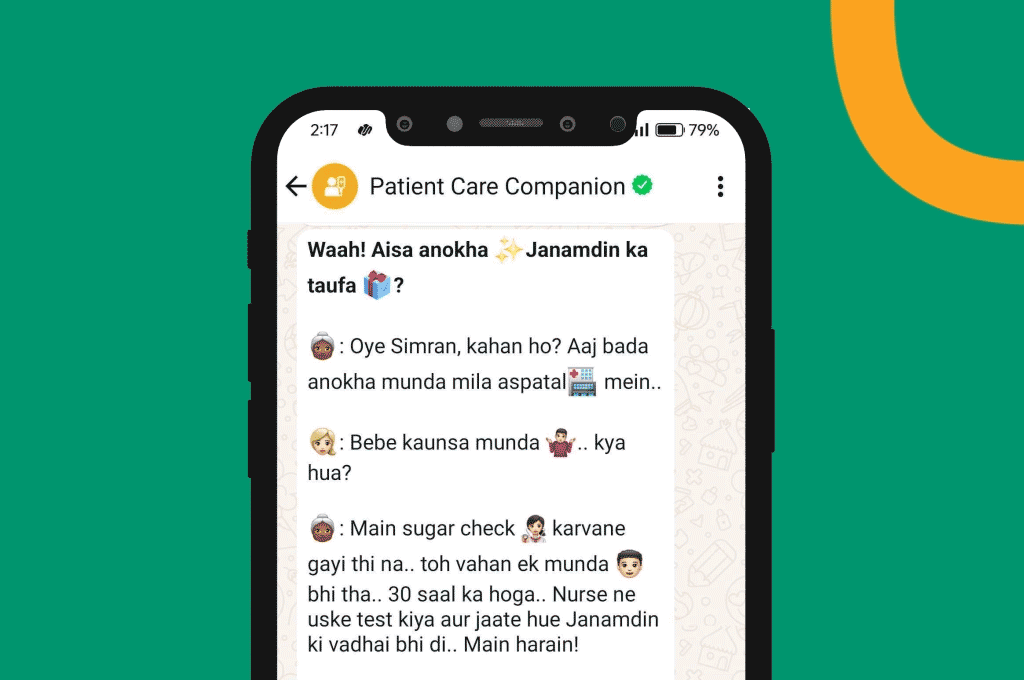
3. Make the service interactive (and market it!)
The RES is designed for two-way communication, allowing patients and caregivers to ask personalized questions and seek clarifications from our backend medical support team. However, during the study, we found that a majority of the participants were unaware of this feature. A small percentage of respondents who asked questions found the responses to be useful, with some even sharing them with other family members and requesting more ongoing access to our help desk.
“I was not aware that we can ask questions in this service, but now that we know, we will ask questions.” — A patient using the IVRS service
This feedback was eye-opening, showing us that it’s not enough to create patient- and caregiver-centered services; we must also clearly communicate their benefits.
Going forward, we’re developing strategies to walk patients and their families through the mobile service during the caregiver training session. By consistently showcasing the availability and utility of these interactive features, we can encourage people to proactively seek out and meaningfully engage with important health information.
4. Resolve tech-related challenges
In one of the questions, we asked participants whether they were aware that they could click on links within messages, and if they used them. Overall, the feedback suggested that many participants did not actively engage with clickable links, with technical difficulties such as slow load times or download problems frequently mentioned as barriers.
“The link was taking more time to open and there were some download issues so I could not see what was on the link.” — A patient using the WhatsApp service
Proactively addressing technical challenges like these is cardinal to ensuring a seamless user experience. One way of doing this is by providing technical assistance and comprehensive guides for individuals encountering difficulties with content access or service utilization. In our case, we make sure our medical support executive team is always available to assist patients and caregivers with any difficulties they may encounter while navigating messages, videos, or links.
Anticipating and solving such issues not only enhances the satisfaction of the people using the service but also fosters a positive perception of the work, ultimately contributing to its overall effectiveness and success.
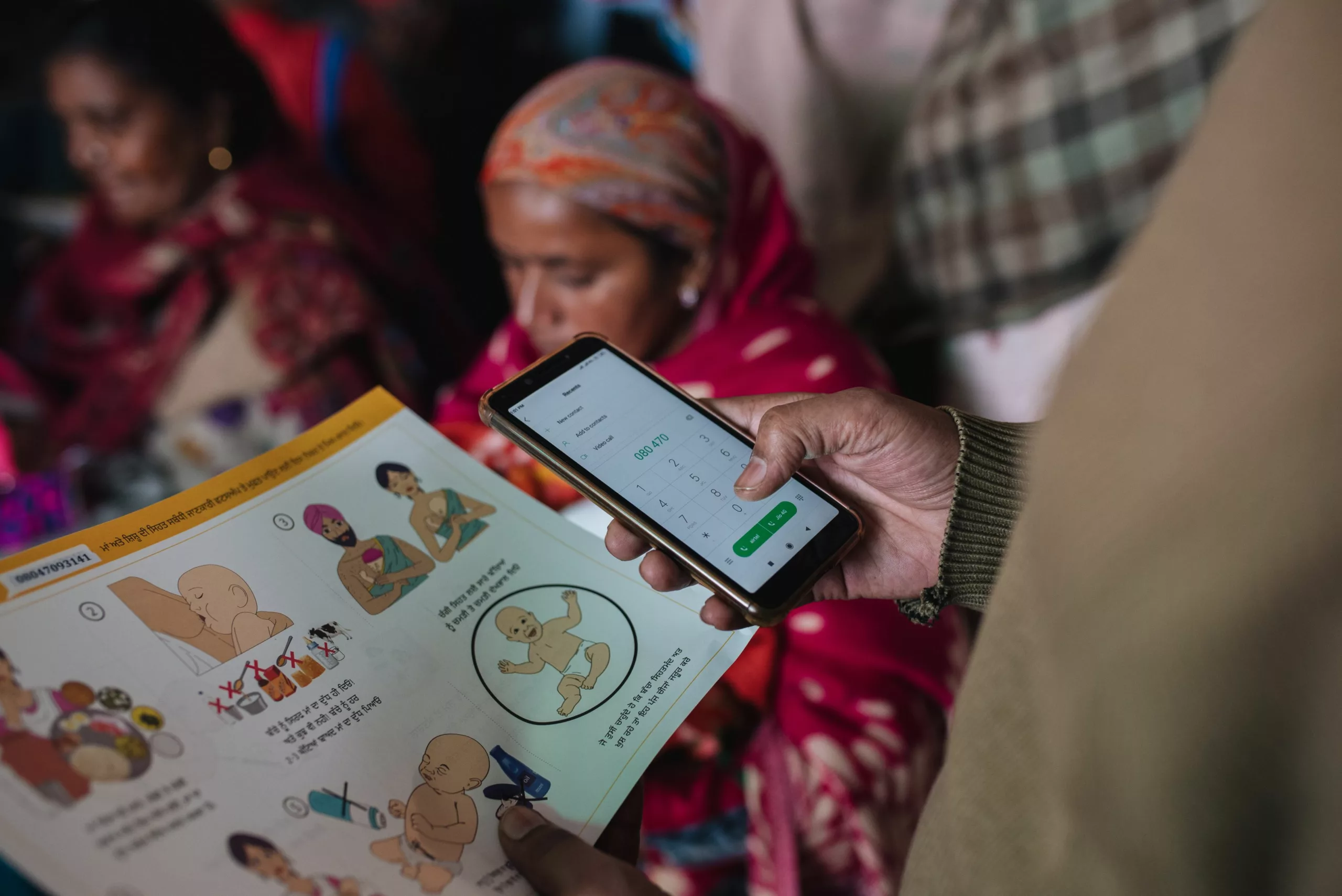
Staying connected with caregivers
Leveraging mobile-based communications within public healthcare represents a revolutionary step towards enhancing patient engagement and health outcomes. Additionally, our experience through this process has underscored the profound impact that targeted, technology-driven communication can have on public health initiatives. Listening to — and acting on — feedback regarding preferred content types and delivery methods has helped us customize messages to address prevalent health issues within the community, enhancing the relevance and effectiveness of the information provided.
As we move forward, it is imperative to continue adapting and refining our strategies based on continuous feedback and evolving technological landscapes. By doing so, we can ensure that our health communication efforts remain effective, inclusive, and responsive to the needs of the communities we serve. The journey of integrating technology in healthcare is ongoing, and it is one that holds promising potential for transforming public health dynamics across the globe.
